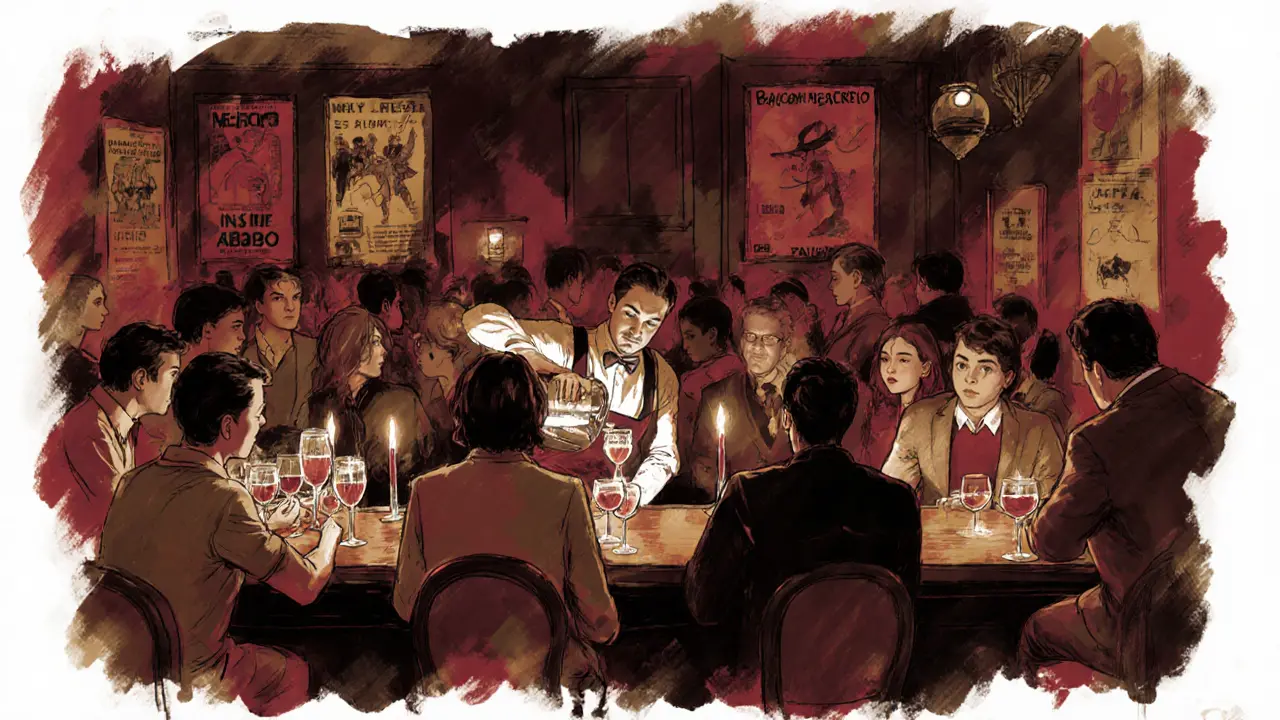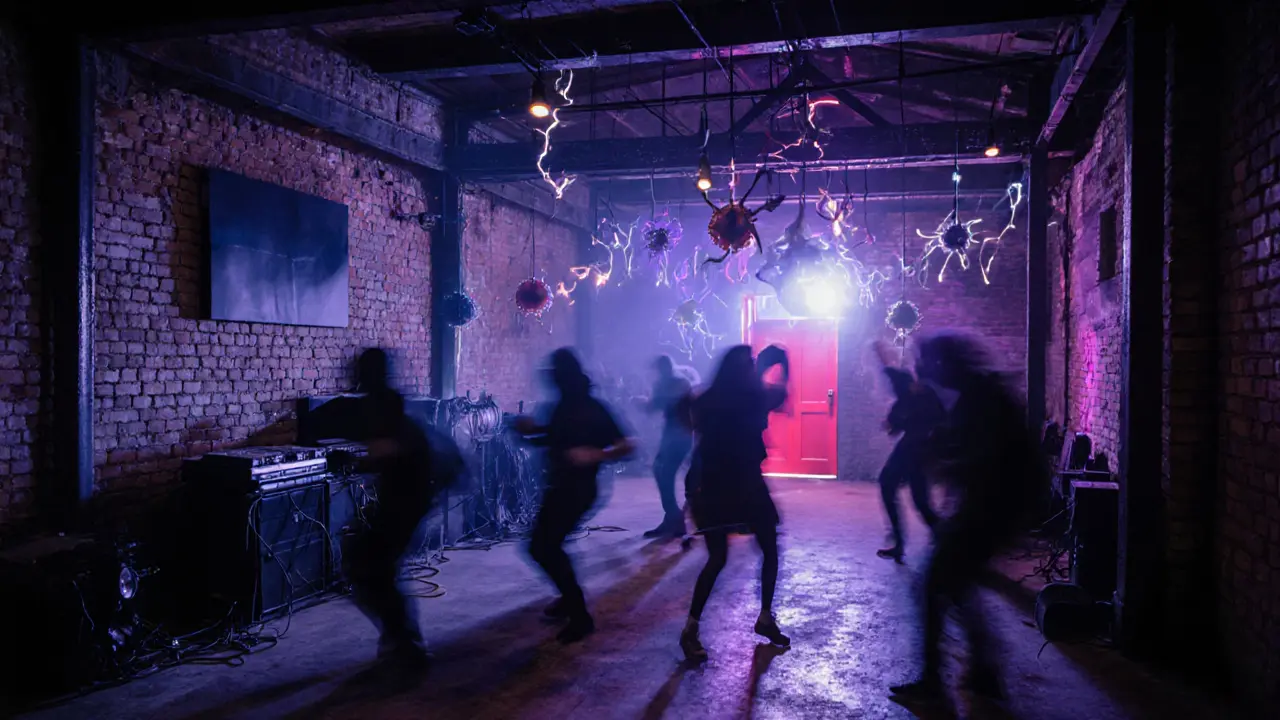Milan doesn’t sleep-and neither should you.
Most people think of Milan as fashion runways and designer boutiques. But when the sun sets, the city transforms. The streets buzz with laughter, basslines thump through hidden courtyards, and wine bars spill onto cobblestones. This isn’t just a city that knows how to dress well-it knows how to party too.
If you’re looking for the real Milan after dark, skip the tourist traps. You won’t find them here. Instead, you’ll find locals sipping Aperol spritzes in back-alley lounges, DJs spinning underground techno in converted warehouses, and rooftop bars where the skyline is your only backdrop. This guide cuts through the noise and shows you exactly where to go, when to show up, and what to expect.
The Navigli District: Where the River Meets the Rhythm
Start your night in Navigli. This canal-lined neighborhood feels like a secret the city forgot to tell the guidebooks. By day, it’s all vintage shops and art markets. By night, it becomes a living party. The canals are lined with outdoor seating, string lights, and the smell of grilled seafood drifting from trattorias.
Head to La Bitta-a no-frills wine bar with over 200 bottles and a staff that remembers your name after one visit. They pour natural wines by the glass and don’t charge extra for ice. Next door, Bar Luce (yes, the one inspired by Wes Anderson) is perfect for a quiet cocktail before the real action starts.
When the crowd thins, walk south toward La Baita. It’s a converted warehouse with a concrete floor, industrial lights, and a sound system that drops hard. Don’t expect VIP sections or bottle service. You’ll find DJs spinning deep house, techno, and obscure Italo-disco from the ’80s. Locals come here to dance, not to be seen.
Brera: Art, Aperitivo, and After-Hours
Brera is Milan’s answer to Paris’s Left Bank-narrow streets, historic palazzos, and a quiet elegance that turns electric after sunset. This is where the creative class unwinds. The aperitivo culture here isn’t just a drink-it’s a ritual.
Try Bar Basso, the birthplace of the Negroni Sbagliato. Order one. Watch the bartender pour it with the precision of a surgeon. The place is small, loud, and packed. You’ll stand shoulder-to-shoulder with architects, artists, and fashion editors. It’s not fancy. It’s authentic.
For something quieter, head to Allevamento. It’s a speakeasy-style bar hidden behind a bookshelf. You need a reservation, and they don’t take walk-ins. Inside, you’ll find cocktails made with house-infused spirits and seasonal herbs. The playlist? Jazz from the ’60s. The vibe? Like you stumbled into a private gathering of people who know exactly what they’re doing.
Brera doesn’t close early. Many bars stay open until 3 a.m., and a few-like Bar Pasticceria Cucchi-turn into all-night cafes. Order a espresso and a brioche at 2 a.m. and you’ll see Milan’s true rhythm: late, loud, and full of life.

Porta Nuova and the Rooftop Revolution
If you want views, head to Porta Nuova. This modern district is all glass towers and sleek design. But don’t let the architecture fool you-it’s where Milan’s elite go to drink in style.
Terrazza Aperol is the most Instagrammed spot in the city. It’s not cheap (€18 for a spritz), but the view of the Unicredit Tower at sunset is worth it. Bring cash. Card machines here often glitch.
For something more exclusive, try Skyline Rooftop Bar at the W Hotel. The dress code is smart casual-no sneakers, no hoodies. The cocktails are inventive: think lavender gin with smoked salt, or a negroni infused with bergamot. The music is chill house, not club-level. This is where you go to impress someone-or be impressed.
Don’t skip La Terrazza at the Four Seasons. It’s quieter, more intimate, and has one of the best gin selections in Italy. They use local botanicals. You’ll taste the difference.
Underground and Alternative: Where the Real Scene Lives
Most tourists never find these places. That’s by design.
Ex Ansaldo is a former train repair shop turned cultural center. On weekends, it hosts live electronic sets, experimental noise performances, and art installations. Entry is €10. You might not know the artist’s name, but you’ll remember the sound. This is where Milan’s youth pushes boundaries.
La Scala Club isn’t the opera house. It’s a basement bar under a parking garage near Lambrate. No sign. Just a red door. Inside, DJs play rare vinyl from the ’70s and ’80s. The crowd? Musicians, designers, and students who’ve been coming here since college. You won’t find a menu. Just ask for a “birra chiara” and they’ll pour you a local lager.
And then there’s Bar Zeta in the Ticinese neighborhood. It’s been open since 1987. No website. No Instagram. Just a barstool, a wall of beer taps, and a guy who’ll tell you the best place to go next. Ask him where the real party is tonight. He’ll smile and say, “Follow the bass.”

What to Know Before You Go
Milan’s nightlife isn’t like Berlin or Ibiza. It’s slower. More deliberate. You won’t find 10,000-person clubs here. But you will find places that feel like home after one visit.
- Start late. Bars don’t fill up until 11 p.m. Dinner is at 9:30 p.m. for a reason.
- Aperitivo is your friend. From 6 to 9 p.m., most bars offer free snacks with your drink. Think bruschetta, olives, mini sandwiches. It’s worth the €10-€15.
- Bring cash. Many small bars don’t take cards, especially after midnight.
- Dress smart. No flip-flops. No sportswear. Milan notices what you wear.
- Don’t rush. The best nights here unfold slowly. Sit. Talk. Drink. Repeat.
When to Go
Weekends are packed-but weekdays are where the magic happens. Tuesday and Wednesday nights are quiet, but the locals who show up are the ones who know the city best. Thursday is the unofficial start of the weekend. Friday and Saturday? Expect lines. Show up before 11 p.m. or wait until 2 a.m. when the crowd thins.
Summer (June-August) means outdoor terraces and open-air clubs. Winter (December-February) brings cozy basements and candlelit bars. There’s no bad time-just different vibes.
Final Tip: Follow the Locals
Don’t rely on apps or blogs. Walk into a bar, order a drink, and ask the bartender: “Where do you go when you’re not working?” They’ll point you to a place you won’t find on Google Maps.
Milan’s nightlife isn’t about the name on the door. It’s about the people inside. And the best spots? They don’t need signs.
Is Milan’s nightlife safe at night?
Yes, Milan is generally safe at night, especially in popular nightlife areas like Navigli, Brera, and Porta Nuova. Stick to well-lit streets, avoid isolated alleys after 2 a.m., and keep your belongings close. Petty theft can happen in crowded bars, so don’t leave your bag unattended. Most locals walk home late without issue-just use common sense.
What’s the best time to start a night out in Milan?
Don’t rush. Most Milanese start their evening with dinner around 9 p.m., then head to a bar for aperitivo between 7 and 9 p.m. The real party begins after 11 p.m., when clubs and underground spots fill up. If you show up at 8 p.m., you’ll be one of the only people there. Wait until 11:30 p.m. to feel the energy.
Do I need to make reservations for Milan bars?
For most casual bars and wine spots? No. But for speakeasies like Allevamento, rooftop lounges like Skyline, or weekend events at Ex Ansaldo, reservations are required. Book ahead if you want a guaranteed spot, especially on Friday and Saturday nights. Walk-ins are welcome at most neighborhood joints-but you might wait.
What’s the average cost of a night out in Milan?
You can have a great night for €30-€50. Aperitivo with snacks: €12-€18. A cocktail at a trendy bar: €15-€20. A beer at a local spot: €5-€8. Entry to clubs: €10-€15. If you stick to neighborhood bars and avoid tourist traps, you won’t break the bank. Rooftops and VIP sections will cost more-but you don’t need them to have fun.
Are there any dress codes I should know about?
Yes. Milan is fashion-forward. While casual is fine in Navigli and Ticinese, most upscale bars and rooftops enforce a smart-casual dress code. No sneakers, no shorts, no tank tops for men. Women can wear jeans and a nice top, but avoid athletic wear. At places like Skyline or La Terrazza, you’ll notice people in blazers, dresses, and leather shoes. It’s not about being rich-it’s about showing respect for the space.
If you want to understand Milan, don’t just see its museums. Stay out past midnight. Let the city pull you into its rhythm. The best stories don’t come from guidebooks-they come from a stranger’s recommendation, a shared bottle, and a beat that keeps you dancing until the sky turns gray.
